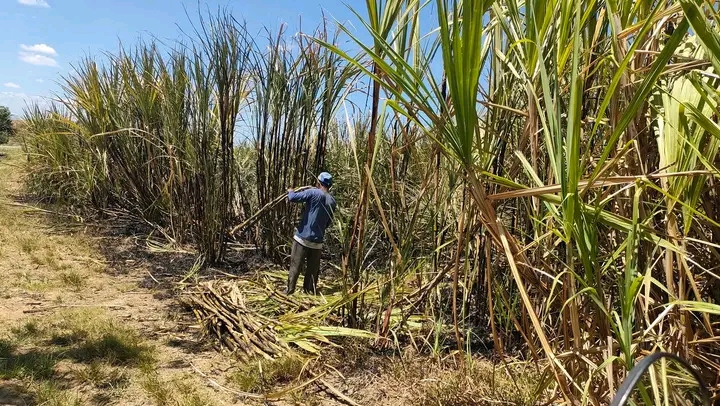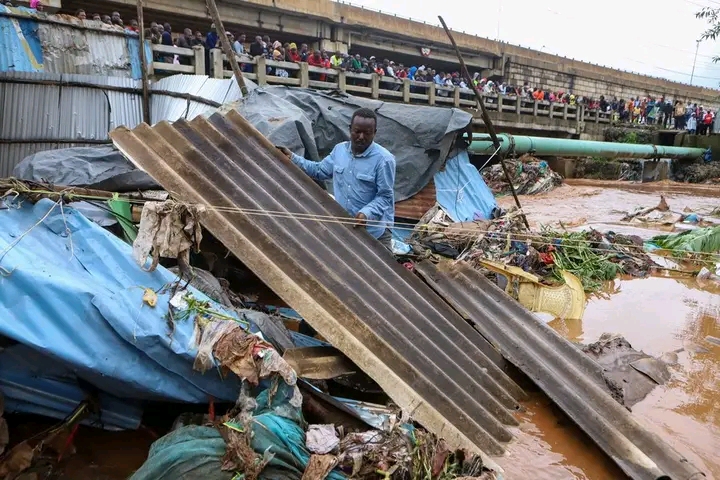Wednesday, 9 April , 2024
McCreadie Andias ,
Kenya is staring at an unprecedented wave of illicit intoxication amongst its most productive Population. In recent months, the Country has been grappling with surging cases of deaths if not blindness caused by Illicit Drugs.
The youths are on their knees crawling to ‘changaa’ dens to quench their thirst for the toxic killer.
Illicit brews, commonly referred to as “chang’aa” or “kumi kumi,” have been a longstanding issue in Kenya, particularly in informal settlements and rural areas.
These homemade alcoholic beverages are often cheaply produced hence being a preferable to many,but they are unregulated, and can contain harmful substances such as methanol, which poses severe health risks to consumers.
In 2022, reports indicated that illicit brews continued to be a significant problem in Kenya being consumed by at least 15% of the population as per a NACADA report, despite government efforts to combat their production and distribution, progress has been slow.
According to the World Health Organization (WHO), the consumption of unregulated alcohol, including illicit brews, contributes to a range of health issues, including liver damage, blindness, and even death.
There have been sporadic crackdowns by law enforcement agencies and periodic media reports highlighting incidents of poisoning or deaths related to consumption.
Counties across the Central, Rift Valley and Western region are the hotspots for this illegal activity. Women in some counties like Murang’a are now complaining that their men can no longer sire children or execute their marital responsibilities due to illicit slavery.
Where are we heading?Just months ago, Illicit Brew claimed 17 lives of young men in Kirinyaga County prompting the government to take heightened actions against the masterminds of this illegal business. But all these actions have proven not enough yet for one two reasons.
The Second in Command, DP Rigathi Gachagua has been on the forefront in battling the illicit brew menace. Yes he has made significant strides to tame this menace but the effectiveness is not yet substantive. What’s not being done?
The Government with DP Gachagua on the forefront has enforced tight measures to curb drug abuse amongst the Youths. It is actually fair to say that the Kenya Kwanza Administration has made giant steps to curtail this menace as compared to the baby steps made by the previous regime.
The Big man Riggy G has fought Illicit brew tooth to nail.
From recently suspending the sale of alcohol in areas where youths are most ravaged by the addiction, to banning administrative officers from running liquor stores and bars. All these have somehow worked but the problem is still staring at us like it never left.
CS Kindiki has gone hard on the same launching security operations to shut down changaa cooking dens to locking up the operators.
Chiefs have also been put on toes as they have been accused of promoting the business and others have even lost their jobs for the same.
Almost everything right has been done but we cannot kill the problem without attacking its roots. Here, I dare believe that the root problem to illicit drug abuse might not be the operators as assumed, the root problem is addiction.
If the government can change its game plan and how it looks at the illicit brew problem then it can win this war early and easy.Taming addiction can solve this problem point blank, but how?
Proper rehabilitation mechanisms have to be adopted to help the millions who have been enslaved by drug abuse, unlock the chains.
I believe if the users are supported to quit the addiction, we would no longer have to worry about the operators, why, because who will they sell the drugs to when everyone is clean?
Establishing more community-based centers or rehabilitation facilities across all constituencies where individuals struggling with illicit brew addiction can receive counseling, support, and access to treatment services is a better way to start. By this we also need to learn how rehabilitation works. Take a case example of alcohol rehabilitation, since it’s the biggest menace in the country.
Alcohol rehabilitation programs often begin with a medically supervised detoxification process to safely manage withdrawal symptoms and cleanse the body of alcohol. This step is essential for individuals with severe alcohol dependence.
Afterwards, Rehabilitation facilities conduct comprehensive medical and psychological assessments to understand the individual’s physical health, mental well-being, and underlying factors contributing to their addiction. This assessment helps in designing personalized treatment plans.
Rehabilitation programs offer various therapeutic interventions, including individual counseling, group therapy, family therapy, and cognitive-behavioral therapy (CBT). These therapies help individuals explore the root causes of their alcohol addiction, develop coping strategies, and learn healthier ways of managing stress and emotions.
Alcohol rehabilitation programs educate participants about the effects of alcohol on the body and mind, the cycle of addiction, and the importance of maintaining sobriety. Additionally, they provide life skills training to help individuals build resilience, improve decision-making, and navigate social situations without relying on alcohol.
Furthermore, Rehabilitation facilities provide a supportive and nurturing environment where individuals feel understood, accepted, and encouraged in their recovery journey. Peer support from fellow participants who understand the challenges of addiction can be invaluable in fostering motivation and accountability.
In addition, Rehabilitation programs equip individuals with relapse prevention strategies to identify triggers, avoid high-risk situations, and develop effective coping mechanisms to prevent relapse. Learning how to manage cravings and deal with setbacks is essential for maintaining long-term sobriety.
Upon completing a rehabilitation program, individuals receive aftercare support and resources to help them transition back into their communities. This may include ongoing counseling, participation in support groups, access to community resources, and follow-up appointments to monitor progress.
Overall, alcohol rehabilitation provides a holistic approach to addiction treatment, addressing the physical, psychological, and social aspects of alcohol dependBy empowering individuals with the necessary tools and support,Kenya is staring at an unprecedented wave of illicit intoxication amongst its most productive Population. In recent months, the Country has been grappling with surging cases of deaths if not blindness caused by Illicit Drugs.
Rehabilitation approaches will also involve the government encouraging the formation of peer support groups where recovering addicts can share experiences, provide mutual support, and hold each other accountable.
Meanwhile, Public Health institutions should work to Provide outpatient treatment services such as counseling, behavioral therapy, and medical assistance to individuals seeking help for illicit brew addiction while allowing them to continue with their daily activities.
Whilst not forgetting, Investing in inpatient rehabilitation centers where individuals with severe addiction can receive intensive treatment, detoxification, and therapy in a controlled environment is similarly effective.
Furthermore, Offering vocational training programs and employment support services to help recovering addicts reintegrate into society and build stable, productive lives and this will help them create more time for working than more time for drinking.
The Ministry of Health in Conjunction with the Ministry of Sports and Youth Affairs should Launch public education and awareness campaigns to inform communities about the dangers of illicit brews, promote healthy lifestyles, and reduce the stigma associated with addiction, these campaigns should be community driven and should be as consistent as possible targeting areas where addiction is intensive.
As much as these measures are adopted, we also have to do it the hard way, there is no easy way in fighting illicit menace. Strengthening regulatory measures that have been put in place by the government and resourcing law enforcement efforts should be centered to crack down on the production, distribution, and sale of illicit brews, thereby reducing their availability and accessibility.
By least, The Government entities cannot win this war alone, hereby entities like NACADA should adopt Partnering with non-governmental organizations (NGOs) and civil society organizations (CSOs) that specialize in addiction treatment and rehabilitation to leverage their expertise and resources.





